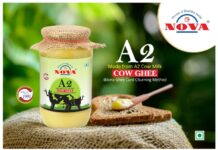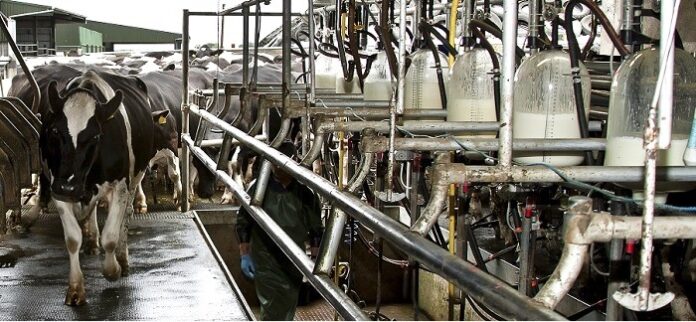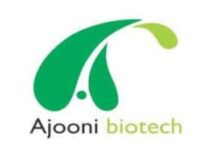New Delhi, December 06, 2023 : The next number of weeks might be a good time to review your Standard Operating Procedures (SOPs) on farm or even creating some new ones ahead of the new production year, explains Padraig O’Connor.
A SOP is a document consisting of step-by-step instructions on how to complete a particular task. SOPs can be created for tasks such as: milking routine; washing the milking machine; calf feeding; and many other tasks that dairy farmers perform daily.
What are the benefits of a well written SOP?
SOPs are an excellent tool for dairy farmers and their employees to work towards common goals. A well written SOP will:
- Provide direction;
- Improve communication;
- Reduce training time;
- Improve consistency;
- Allow somebody to help out in the case of an emergency;
- Support a more profitable business.
How to develop a SOP
Developing a SOP should be an inclusive process. Get the input of everyone involved in the task. Dairy farmers/managers that consider the input from their employees will increase buy-in and produce a better SOP.
There are seven steps to creating excellent SOPs:
- Planning;
- First draft;
- Internal review;
- External review;
- Testing;
- Display;
- Train.
1. Planning
The first step is to link the SOP with the business goal or goals that it will help achieve. The SOP can then be shaped from the beginning with steps that lead to accomplish this goal. For example, a SOP on the milking routine should tie in measurements such as somatic cell count (SCC), total bacterial count (TBC) and thermoduric bacteria levels in milk.
2. First draft
The next step is to make a detailed list of the steps in the order that they are done. Don’t try to be perfect with the first draft because it is very likely that you will need to make changes. Writing a first draft provides a good starting point for the review and discussion.
3. Internal review
Provide each employee who performs the task with a copy of the draft SOP. Ask them to review and trial it out and suggest changes if needed. They are likely to have good ideas. Assure employees that their input is important and will be considered. People are much more likely to accept and use the SOP if they are involved in creating it.
4. External review
Dairy farmers/managers should seek advice and ask for feedback from people, such as their advisor and vet, when creating a SOP. They can give advice that draws on their knowledge and experience from other dairy farmers. Revise the SOP as necessary to incorporate these changes.
5. Testing
Have a person (preferably someone unfamiliar with the task) test the SOP by performing each step exactly as it is described. Any step that causes confusion for the tester should be revised.
6. Display
Make a final draft of the SOP and display a laminated copy in the appropriate location. It is also essential to keep SOPs up to date.
7. Train
The last step in the SOP writing process is to train the workers to follow the steps exactly. Otherwise workers will interpret the steps in different ways, leading to inconsistency in work routine and performance. When training workers, share the reasons why procedures must be performed correctly – not just what to do or how to do it. Workers are much more likely to follow the steps exactly when they understand why they are important.
Key Messages when creating SOPs:
- Written in a clear and readable style;
- Need to be specific to the farm;
- Linked to business goals;
- Written in a logical manner;
- Located beside the workstation where they are needed;
- Laminated;
- Photos can be included;
- Keep to a single page;
- Break down the tasks. Milking can be broken into three SOPs for example – preparation for milking, milking routine and cleaning up after milking;
- Build on feedback from internal and external personnel;
- Get buy in from your employees by involving them in the process from the beginning;
- Measurable;
- Test the SOP – preferably somebody unfamiliar with the task;
- Train your employees to follow the steps of the SOP;
- Update and review regularly;
- Have a master copy of all SOPs in a central location;
- Technology can be used, e.g. short videos to communicate SOPs to staff also. According to the reports published in dairynews7x7.com .
SOPs are a great way of communicating with staff. Each of us may have a different way of performing tasks but when you are trying to produce a high-quality product, it is very important that each step is done in a specific manner. This is to ensure the task is carried out consistently and to a high standard by all people involved. Regardless of farm size, SOPs are an important tool to improve dairy production tasks.


















![Poolani Milk Cooperative Society [PMCS] well-established and fastest-growing in the Dairy Sectorof RuralKerala](http://thedairytimes.com/wp-content/uploads/2024/04/1-218x150.jpg)









![Poolani Milk Cooperative Society [PMCS] well-established and fastest-growing in the Dairy Sectorof RuralKerala](http://thedairytimes.com/wp-content/uploads/2024/04/1-100x70.jpg)


